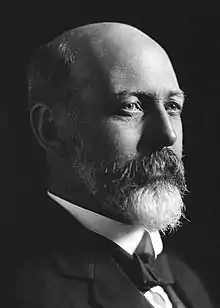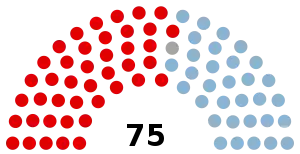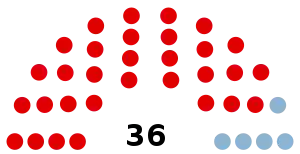1914 Australian federal election
The 1914 Australian federal election was held in Australia on 5 September 1914. The election had been called before the declaration of war in August 1914. All 75 seats in the House of Representatives and all 36 seats in the Senate were up for election, as a result of the first double dissolution being granted. The incumbent Liberal Party, led by Prime Minister Joseph Cook, was defeated by the opposition Labor Party under Andrew Fisher, who returned for a third term as Prime Minister.
| ||||||||||||||||||||||||||||||||||
All 75 seats in the House of Representatives 38 seats were needed for a majority in the House All 36 seats in the Senate | ||||||||||||||||||||||||||||||||||
|---|---|---|---|---|---|---|---|---|---|---|---|---|---|---|---|---|---|---|---|---|---|---|---|---|---|---|---|---|---|---|---|---|---|---|
| Registered | 2,811,515 | |||||||||||||||||||||||||||||||||
| Turnout | 1,726,906 (73.53%)[lower-alpha 1] ( | |||||||||||||||||||||||||||||||||
| ||||||||||||||||||||||||||||||||||
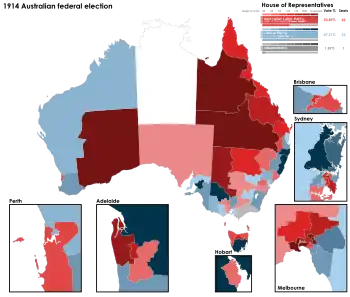 Results by division for the House of Representatives, shaded by winning party's margin of victory. | ||||||||||||||||||||||||||||||||||
| ||||||||||||||||||||||||||||||||||
The Cook government is one of only two non-Labor governments in Australian history that did not last longer than the Labor government it had replaced; the other was the Howard government, which was defeated in 2007.
Additionally this marks the only time that three three consecutive elections resulted in a change in government. In fact, since this election there have never been two consecutive elections resulting in a change in government. It also marks the third overall time that an election resulted in a change in government.
Fisher is one of only two Opposition Leaders from the Labor party to become Prime Minister with previous federal ministerial experience, the other being Anthony Albanese . This election was the second time he accomplished this, the first being in 1910.
This election resulted in the highest ever primary vote percentage for the Labor party at 50.89% and was the first time that the Labor party achieved more than 50% of the primary vote. The only other time this happened was in 1954.
Results
House of Representatives
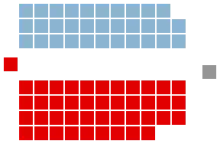
| Party | Votes | % | Swing | Seats | Change | |
|---|---|---|---|---|---|---|
| Labor | 858,451 | 50.89 | +2.42 | 42 | +5 | |
| Liberal | 796,397 | 47.21 | −1.73 | 32 | -6 | |
| Independents | 31,915 | 1.89 | −0.70 | 1 | +1 | |
| Total | 1,686,763 | 75 | ||||
| Labor | Win | 42 | +5 | |||
| Liberal | 32 | −6 | ||||
- Notes
- Independents: George Wise (Gippsland, Vic)
- Thirteen members were elected unopposed – seven Labor and six Liberal.
Seats changing hands
| Seat | Pre-1914 | Swing | Post-1914 | ||||||
|---|---|---|---|---|---|---|---|---|---|
| Party | Member | Margin | Margin | Member | Party | ||||
| Corio, Vic | Liberal | William Kendell | 1.4 | 3.0 | 1.2 | Alfred Ozanne | Labor | ||
| Gippsland, Vic | Liberal | James Bennett | 5.0 | 6.0 | 1.0 | George Wise | Independent | ||
| Grampians, Vic | Liberal | Hans Irvine | 3.9 | 4.2 | 0.3 | Edward Jolley | Labor | ||
| Indi, Vic | Liberal | Cornelius Ahern | 1.8 | 3.0 | 1.0 | Parker Moloney | Labor | ||
| Riverina, NSW | Liberal | Franc Falkiner | 1.0 | 3.1 | 2.1 | John Chanter | Labor | ||
| Werriwa, NSW | Liberal | Alfred Conroy | 5.9 | 5.9 | 0.0 | John Lynch | Labor | ||
Post-election pendulum
See also
Notes
- Turnout in contested seats
References
External links
- University of WA election results in Australia since 1890
.jpg.webp)
